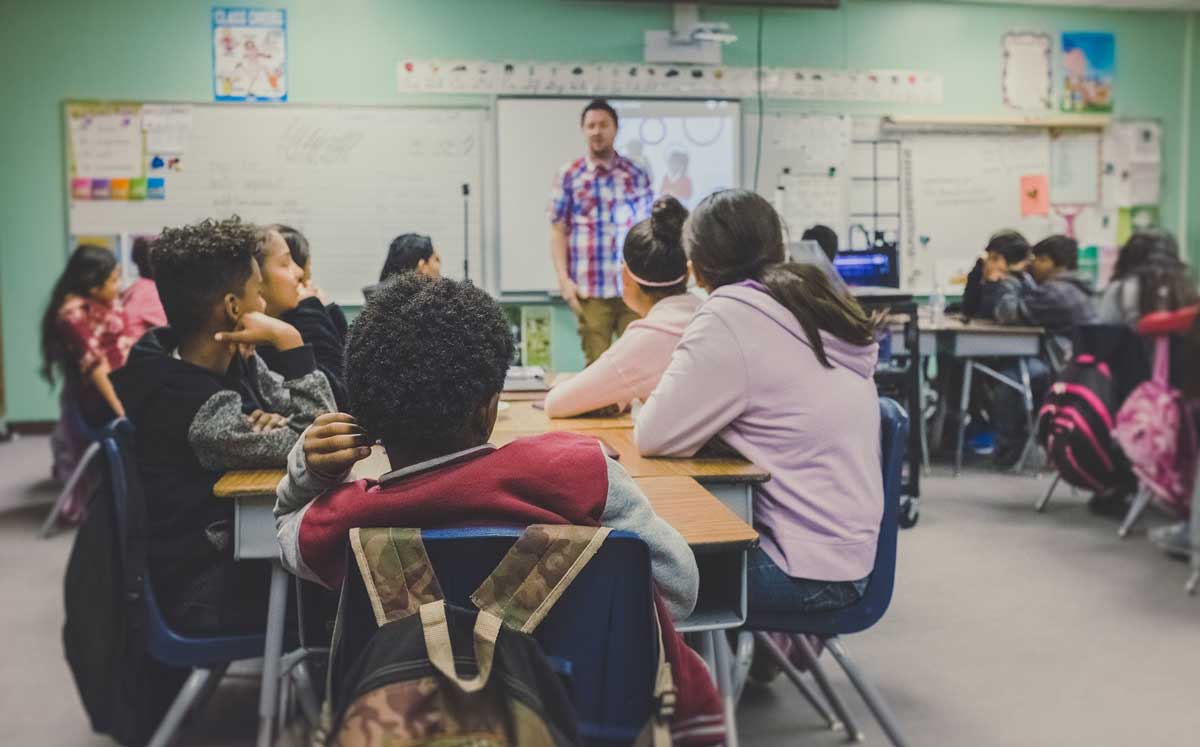What Teachers Should Know
Anxiety disorders cause people to feel frightened, distressed, or uneasy during situations in which most people would not feel that way. Left untreated, anxiety disorders can make it hard for students to get schoolwork done or study. It may affect their relationships with peers and teachers, too. In some cases, students with anxiety disorders miss a lot of school days. Or they may avoid school altogether.
Common anxiety disorders that affect kids and teens are:
- Generalized anxiety disorder (GAD). With GAD, children have many worries and worry much of the time. They may also have physical symptoms, like headaches, stomachaches, muscle tension, or tiredness.
- Phobias. A phobia is an intense, unrealistic fear of a specific thing. Some kids have a phobia of dogs. Others have a phobia of spiders or snakes. A child with a phobia will go to great lengths to avoid the thing they fear.
- Social anxiety. Kids and teens with social phobia have an intense fear of being judged. It affects them in social or other situations. They will avoid situations where they may have to meet new people or perform.
- Selective mutism. Some students are too fearful to talk at all in certain situations. Kids and teens with selective mutism are able to talk, and talk well. But they are too fearful to talk in some situations outside their home or with people other than friends.
- Panic disorder. Some students have panic attacks, a sudden and intense episode of fear. They can include physical symptoms like a pounding heart, shortness of breath, or dizziness. Panic attacks can happen unexpectedly.
- Separation anxiety. It’s normal for babies and very young children to have some separation anxiety when they are apart from a parent or caregiver. But when separation anxiety lasts beyond the early school age years, students may have trouble coming to school.
Students with anxiety disorders may show symptoms that fit into one or more of these categories:
- have trouble concentrating in class or completing classwork
- feel self-conscious and avoid certain situations
- have physical symptoms, such as a racing heart, fast breathing, tense muscles, sweaty palms, a queasy stomach, and trembling hands or legs
- take medication to help reduce anxiety
- may need to work with a school counselor or therapist
What Teachers Can Do
Teachers can help students by:
- talking with parents to learn more about the student and how you can best support them
- allowing students extra time to do work
- learning how to coach students to self-calm with breathing and other relaxation techniques
- giving them daily schedules
- modifying assignments and reducing workloads when necessary
- promoting relaxation techniques and allowing for breaks throughout the day
- supporting parents in helping kids get to school, even if it means arriving late or adapting class schedules
- allowing them a safe space and ability to go speak with a counselor, if needed
- easing anxiety in the classroom by pairing with a peer
Inconsistent Academic Results Can be a Sign of Mental Health Issues
These disorders can also lead to inconsistent academic results. For example, a student may produce incredible work one day and barely be able to complete a single task the next. This unpredictable behavior is a prevalent sign that anxiety or depression might be present. The inconsistency of these disorders can leave students feeling frustrated and teachers confused and unsure how to approach the situation.
When students are depressed or are dealing with anxiety, they are more likely to disengage in the classroom.
This can cause them to participate in behaviors that will allow them to avoid certain events and situations. For example, missing class or going to the nurse during a quiz or presentation are a few ways students may demonstrate an anxiety disorder.
Teachers have to be prepared and know which signs to look for so that they can determine what is really going on with the student and how they can best help them.
Missing Class Can be a Sign of Anxiety
These disorders can also lead to school refusal, or school phobia. This is when a student’s anxiety or depression is so severe that they begin avoiding going to school at all. This can begin with missing class, going home early and staying home, but eventually can lead to school drop out. The Centre for Emotional Health at Macquarie University states that 49% of adults with anxiety reported leaving school early and 24% claimed that anxiety was the primary reason for them leaving.
The negative impact anxiety and depression have on students’ academic performance doesn’t just hurt them and their families, but it has consequences for the economy and society as a whole because they are not receiving a proper education.
Risks That Can’t be Ignored
When anxiety and depression are not identified and properly addressed there are long-term risks for students.
A student dealing with one of these disorders can experience negative effects on their attention, interpretation, concentration, memory, social interaction and physical health.
All of these factors play a key role in each student’s academic success and achievement. A child who has anxiety is more likely to focus their attention on things that they perceive to be a possible threat rather than focusing on what is important, like learning in the classroom. Individuals will also interpret everyday situations as dangerous or threatening and will often assume the worst case scenario.
When someone is experiencing anxiety or depression the majority of their mental capacity is used to create and process worrisome thoughts. This can make it extremely difficult to focus on positive thoughts and can be very exhausting for the student, which detracts from their learning abilities.
Not only do these disorders impact memory, which makes it hard for students to recall information, but they can also have negative effects on how students engage in social situations. Often, students with anxiety or depression will avoid interactions with their peers and will perceive neutral situations as threats. This, in turn, makes others uncomfortable and results in the student feeling lonely, outcast and increases anxiety and depression.
Physical symptoms like headache, fatigue, nausea and unexplained illness are also risks of untreated anxiety and depression. Children with these disorders have a higher resting heart rate, higher blood pressure, higher cortisol levels and they carry more tension in the body. These physical effects often lead to missed school days causing the child to fall behind.
Dealing with undiagnosed depression or anxiety can result in students feeling like they are constantly missing out on opportunities and this can lead to substance abuse, conduct problems, further mental health problems and even suicide.
Currently, suicide is the second leading cause of death among college students. Heather Morgan, a crisis line manager for Didi Hirsch Mental Health Services Suicide Prevention Center says, “We receive calls from college students daily. Since people go through different traumatic events in life; calls, texts and chats can range from relationship issues, LGBTQI questions or concerns, financial, and family issues or concerns – to name a few.”
The negative impact of anxiety and depression on student’s academic progress and overall well-being is very clear. Early anxiety disorders typically predict adult anxiety disorders making it crucial to address them early on. 85% of depressed adolescents have a history of having anxiety as a child. If these issues can be identified early on while the child is in school there is a better chance for treatment and preventative care so that the above consequences can be avoided.
Teachers and Schools Need to be Prepared
Under the Individuals with Disabilities Education Act (IDEA), parents have the right to request appropriate accommodations related to their child’s diagnosis. Teachers and school staff need to be able to respond effectively and know which accommodations to provide for each student.
Mental health training is crucial in schools, especially for teachers, who are interacting with students on a daily basis and have many opportunities to observe behavior and reach out.
A mental health training program will prepare teachers and staff to look for discreet signs that may indicate disorders like anxiety. These signs include increased inflexibility, over-reactivity, emotional intensity, impulsivity, acting out or escaping to avoid a situation. Very often a student may go to the nurse during a quiz or get kicked out of class on purpose. Teachers may interpret the child as simply being a troublemaker or slacking off, when in reality, they are feeling intense anxiety and are trying to protect themselves.
There’s a reason anxiety and depression are referred to as invisible diseases. It can be very difficult to identify these disorders in students unless teachers have a deep understanding of them and know exactly what to look for. Training is necessary because the best way to improve these conditions are to address them as soon as possible.
Isabel, a school superintendent in California says, “In most schools mental health certification is reserved for a social worker or guidance counselor. Yet 99.9% of student contact time everyday is with a teacher, bus driver or coach. Our number one priority should be to train and equip our front line staff to deal with this crisis.”
Teachers and classroom staff are on the front lines of helping students seek proper treatment and receive an education in a safe, comfortable environment. When school staff and teachers are properly trained they are able to effectively address anxiety and depression among their students and create a better learning environment that will produce higher academic outcomes.
Student Mental Health Training and Certification
IBCCES and their board of experts, including international leaders in the educational field, Tier 1 University researchers, master educators, and clinical professionals, have designed a Student Mental Health Specialist (SMHS) training and Student Mental Health Certificate (SMHC) certification. 81% of teens with anxiety responded positively to teacher intervention and 71% of students with depression had higher test results after teacher engagement.
The purpose of the SMHS and SMHC training and certification is to prepare teachers and other school staff to provide support for students in the classroom while monitoring changes in student behavior and understanding common disorders or mental health concerns. The IBCCES program is unique because it combines training with independently verifiable certification, providing schools with the resources they need to support students and parents to enhance learning opportunities and the overall school atmosphere.
Benefits of the SMHS and SMHC program include:
-
Access to relevant strategies that can be implemented immediately
-
Best practices and latest research in anxiety and mental health disorders
-
Confidence to handle stressful situations and approach students with useful tools
-
Ability to improve learning for students and produce better academic results
-
Credibility and recognition for the staff and school
-
Ability to create a sense of security in the classroom.
Take the First Step
The SMHS and SMHC program consists of a convenient six step process that can be completed online.
There is no reason why teachers and school staff have to continue feeling unprepared and student anxiety and depression has to continue going unnoticed and unaddressed.




